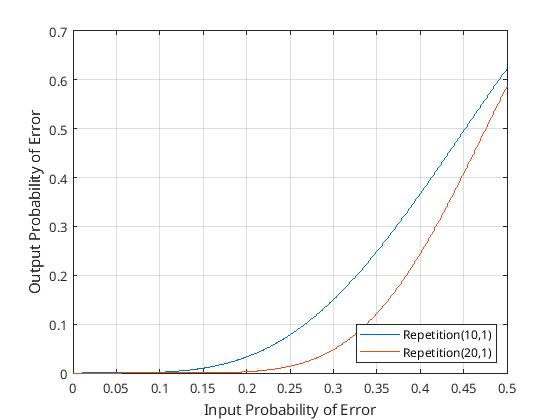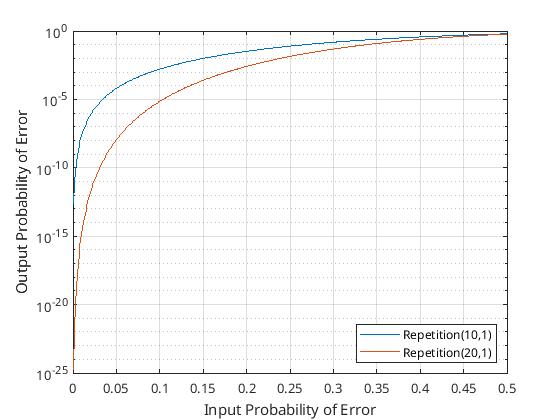-
At present, we are using 10 bits to encode the data bit. Thus, we can think of this as a Repetition(10, 1) scheme.
-
We also are using all 16 combinations of the 4 bit input data sequence (40 bit encoded sequence). Thus, the input data has a minimum hamming distance of 1
-
If we combine this fact along with our encoding scheme, the effective minimum hamming distance is 10
-
Thus, this encoding scheme can correct upto 4 bits.
-
Similarly, if we increase the minimum hamming distance of the input data to 2 by considering only 4 out of the 16 4 bit schemes, the minimum effective hamming distance is now 20, and this can correct upto 9 bits.
- The probability of error of transmission is estimated by taking trials against the ground truth blink sequence
10101010101010101010. - Each bit of the ground truth sequence has a corresponding 10 bit of sensor data. So the ground truth blink sequence corresponds to a 100-bit binary sequence
111111111100000000001111111111... - This sequence was chosen as the ground truth because this sequence capture the transition of the bits from
0 to 1and1 to 0. - Multiple trials of sequences are conducted against the ground truth blink sequence.
- The probability of transmission error was calculated as the hamming distance between the recorded sequence and the ground truth sequence.
- It was observed that the probability of transmission error ranged from 0.1 to 0.4 for various trials. The mean probability comes out to be 0.28
- The probability of error for an encoding scheme can be theoretically calculated with the help of the number of bits that can be corrected.

